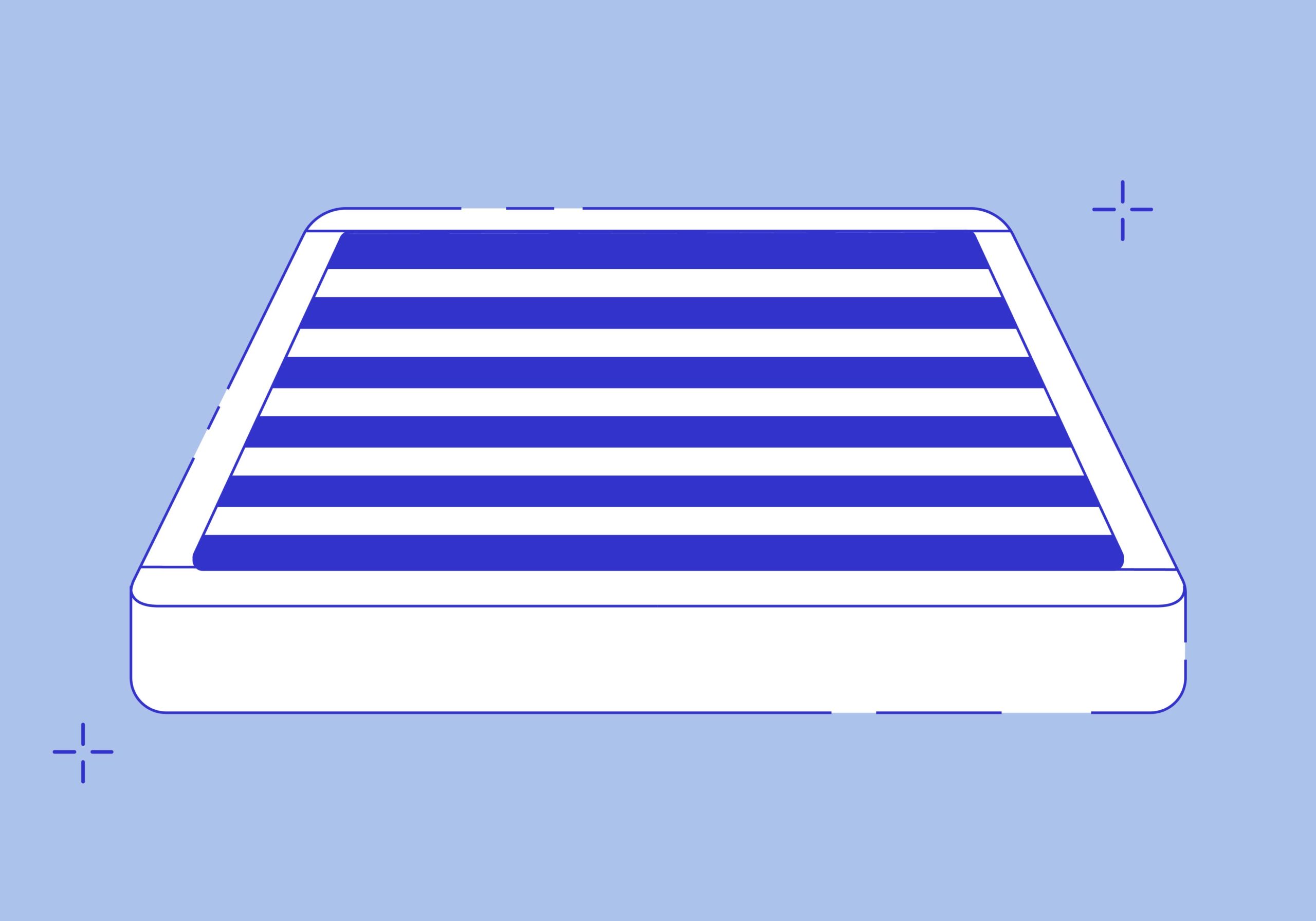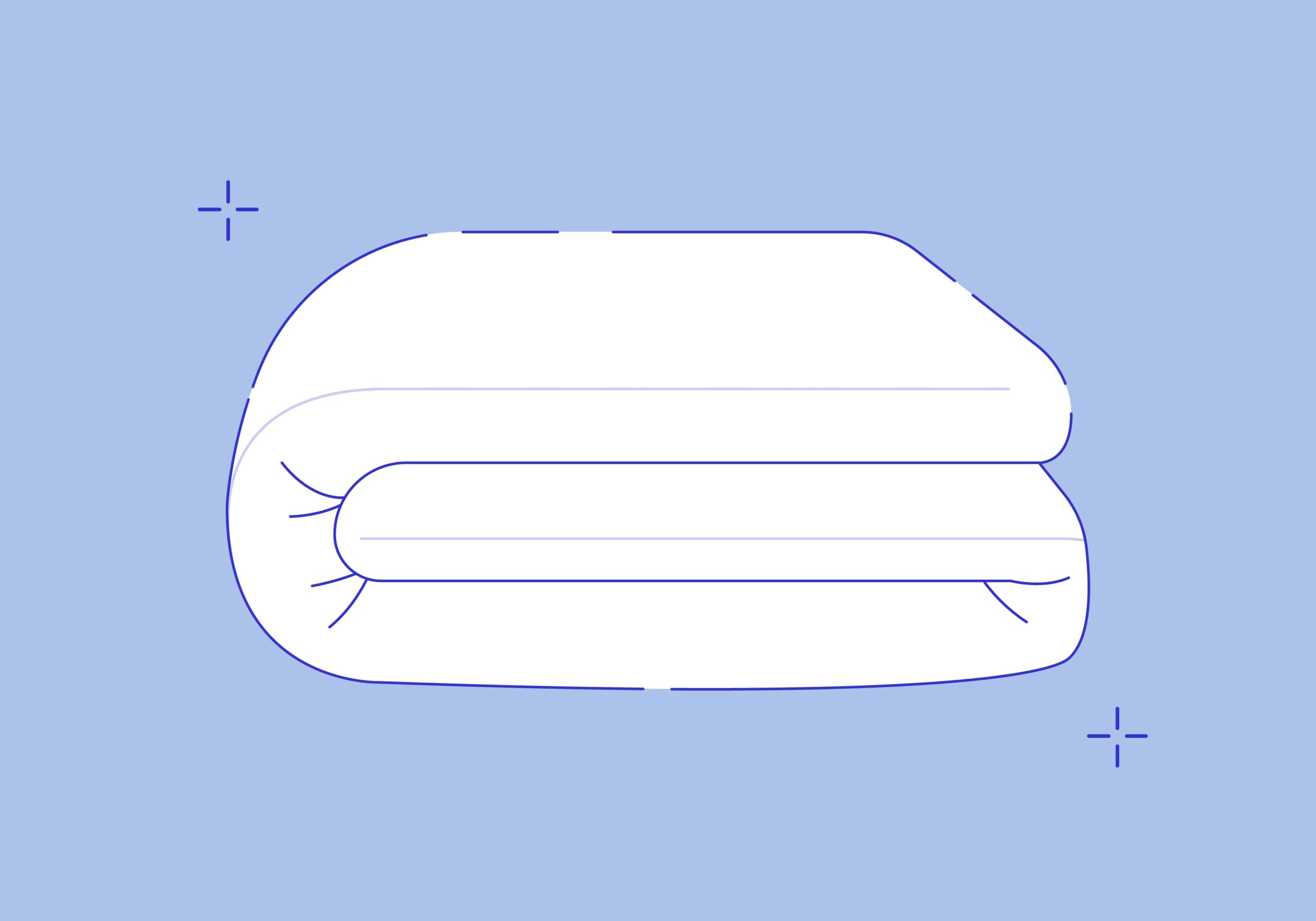How Come My Blue Max 1000 Plush Mattress Doesnt Keep Me Cool
In general, memory foam mattresses cultivate the most heat. In fact, 15% of users state their memory foam beds cause them to overheat. Hot mattresses may result in uncomfortable night sweats due to the dense nature of the foam; however, there are ways to make your bed cooler.
In this article, we'll explain why memory foam retains heat and give you some tips to keeping your foam mattress nice and cool all night.
Why Do Memory Foam Mattresses Sleep Hot?
Memory foam beds are well-known for their conforming abilities and alleviation of pressure points. Memory foam is dense and filled with disconnected air bubbles, limiting airflow. When the foam is compressed, air bubbles are displaced, which limits space for airflow.
The body's ability to self-regulate temperature relies on body-to-air contact. Because high-density materials have limited airflow, overheating while lying on a foam mattress is normal.
Twenty years ago, foam mattresses were very dense with low resilience, resulting in heat and moisture retention. Modern foams are made to enhance breathability and wick moisture.
Hot sleepers also need to be aware of mattress firmness, since a too-soft bed can sleep hot. Firm foam beds don't encourage sinkage; therefore, the foam materials don't compress excessively beneath you. Plush materials increase sinkage, causing a "hugging" feeling. Non-cooling foams can cause the "hug" sensation to become unbearably hot instead of comfortable.
Using a mattress infused with copper, graphite, or gel can prevent heat retention and sleeping hot.
Tips and Tricks
Hot sleepers are looking for cost-effective ways to resolve heat issues. Changing your bed's foundation or bedding can increase airflow and moisture-wicking, which will improve your quality of sleep.
Change Your Foundation

To start off, consider the bed frame your mattress sits on. A solid platform foundation (or the ground) can constrict airflow while contributing to heat and moisture retention. The lack of air circulation prevents the removal of heat and moisture, leading to mold growth and an unhealthy sleep environment.
Switching your foundation for a slatted base will increase airflow by providing more space for air to move around, beneath, and inside the bed, removing warm, moist air.
Add a Topper or Mattress Pad

Mattress pads and cooling mattress toppers are an inexpensive fix and one of the most effective ways to cool down your foam mattress.
Adding a layer of natural material, such as wool, to your mattress can foster air circulation between your skin and the bed. Wool and cotton toppers naturally regulate temperature and wick away moisture.
Gel-infused memory foam can also provide support for sagging mattresses by pulling heat away from the sleeper.
When deciding between a topper or mattress pad, we must note that toppers typically have more material but pads are far more inexpensive.
Use Natural Fiber Bedding

Sometimes the problem isn't your mattress— it's your bedding. Polyester sheets and pillows can stop airflow and make your bed feel stuffy. Non-synthetic bedding will encourage air to circulate around your body, decreasing the temperature.
Bed Sheets and Blankets
Bed sheets and covers can cause temperature issues. A heavy down comforter can act as an insulator for you and the entire mattress. Conversely, natural fabric sheets and blankets can improve air circulation and wick away moisture for a cool sleep experience.
During the summer months, linen and Egyptian or Peruvian Pima cotton sheets (thread counts between 200 and 350) can improve your electric bill by providing breathability and reducing sweating.
Thread count will affect your bedding breathability largely. And, the count changes depending on the type of fabric you choose. For instance, Linen doesn't need a high thread count. Between 100 and 200 is all you need for cool and airy sheets. Meanwhile, Egyptian cotton needs a count between 200 and 350 to have great durability and cooling properties.
Pillows
Mattresses play a large part in your comfort level, but pillows are just as important. When your head gets hot, your body will naturally raise its temperature to match. A heat-retaining pillow can raise your temperature by a whole degree. Natural fiber-filled pillows will keep your head cool and, therefore, lower your body temperature.
These pillow fillings sleep the coolest:
- Bamboo
- Buckwheat
- Feather
- Cotton
Bedroom Climate Control

As part of your sleep cycle, your body heat decreases. Decreasing the room temperature to 68 degrees can quickly facilitate a deeper sleep. Warm air will intervene with your body's sleep process, making you wake up frequently throughout the night.
If you're still not resting well after setting your thermostat, it's time to take a look at your sleepwear. Polyester or fleece PJs won't help— instead, try cotton or linen pajamas that wick away moisture and heat, enhancing your bed's ability to keep you cool.
A floor or ceiling fan maintains constant airflow and low temperatures. If you're still having issues with heat, place a bag of water or ice in front of the fan to reduce air temperature. Opening the window helps, too.
Remember, noises from fans or outside can disrupt sleep. Turning your fan to the lowest setting can reduce noise. Unfortunately, the only way to diminish outside noises is to shut the window.
Consider a New Mattress
After you've tried everything and your bed still retains heat, upgrading to the best mattress to keep you cool is another option.
Keep in mind, memory foam has advanced in recent years. Your old foam mattress has outdated cooling technology, and not all memory foam is created equal. Consider gel-infused or plant-based foams before you select another memory foam bed.
Trying other types of beds can reap good results too.
Innerspring mattresses are known best for their cooling properties. The innerspring coil cores cultivate more air circulation. However, innerspring beds are more prone to sagging and encourage allergen build-up inside the mattress.
Latex mattresses are cooling, and have supportive and contouring properties that rival memory foam beds. People like it for its slightly bouncy surface, and it's natural ability to wick away moisture and heat.
Hybrid mattresses incorporate memory foam or latex layers with an innerspring core. These beds have cooling options but don't match innerspring beds as the foam layers on top won't allow for as much air circulation.
Frequently Asked Questions
How do you cool down on a memory foam mattress?
Try using cooler fabrics for bedding, such as Tencel, bamboo, or organic cotton. Avoid synthetic blends or wool, since these can trap heat. You could even try taking a warm bath before bed since this signals your body temperature to drop and even helps you sleep better.
What is the best mattress for hot sleepers?
Sleepers who tend to sleep hot should choose mattresses with cooling technologies and materials, such as gel memory foam, open-cell foam, plant-based foam, or hybrid mattresses with a mixture of memory foam and coils.
How do I keep from sweating on my memory foam mattress?
If you experience night sweats on your memory foam mattress, the cause could be a medical condition, such as hormones, anxiety, or even the flu. To ensure your mattress doesn't make it worse, choose one with a breathable cover and responsive, cooling comfort layers made with open-cell and/or plant-based foams.
What's the best room temperature for sleep?
Keep your thermostat between 68-72 degrees for the best sleep. If you're trying to save money on your air conditioning bill, try using a fan or open a window instead.
What are the coolest mattresses?
Innerspring mattresses are naturally quite cool because they have a coil base. The open spaces between the coils allow air to flow through easily. However, innersprings also lose support quickly. Memory foam mattresses made with gel foam or plant-based foam will keep the mattress cool and they won't lose support.
Conclusion
Memory foam is a great option for those who suffer from back pain or anyone who needs pressure-relief. However, you might be concerned about your foam mattress retaining heat!
If buying a new mattress isn't an option, toppers and cooling pads can create a barrier between you and your hot bed. Choosing natural fiber bedding can enhance the bed's breathable and moisture-wicking properties. Remember, if you've had you foam mattress for 7-10 years and it's starting to become unsupportive, it might be time for a new bed after all.
smithwhanderharty.blogspot.com
Source: https://eachnight.com/mattress-resources/how-to-keep-cool-on-a-memory-foam-mattress/
0 Response to "How Come My Blue Max 1000 Plush Mattress Doesnt Keep Me Cool"
Postar um comentário